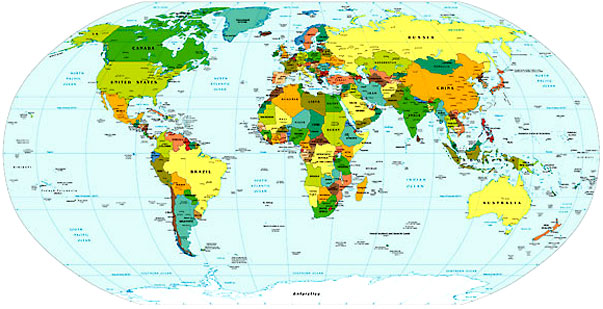 Like much of Central America, Honduras celebrates its Independence Day on 15 September, in celebration of the 1821 separation of Guatemala from Spain: Honduras was, in the colonial days, part of the Guatemala Captaincy General. On gaining independence from Spain the larger Guatemala joined up with the Mexican empire, going through another round of independence in 1823 when that dissolved and Honduras was part of the Federal Republic of Central America. A few years later, in 1838, the Federal Republic also disintegrated, and Honduras, like other member states, became an independent nation.
Like much of Central America, Honduras celebrates its Independence Day on 15 September, in celebration of the 1821 separation of Guatemala from Spain: Honduras was, in the colonial days, part of the Guatemala Captaincy General. On gaining independence from Spain the larger Guatemala joined up with the Mexican empire, going through another round of independence in 1823 when that dissolved and Honduras was part of the Federal Republic of Central America. A few years later, in 1838, the Federal Republic also disintegrated, and Honduras, like other member states, became an independent nation. Mayans did get down to Honduras—the western region, near its border with present-day Guatemala. Following the decline of the Mayan civilisation, the Lencas were the main indigenous group living in that region of Honduras. But it’s not like the west was the only region that anyone lived in—there’s plenty of evidence of other pre-Columbian cultures here, as pretty much anywhere in Central America. But we know Columbus showed up, and it became a post-Columbian world.
After Honduras became its own nation who do you think moved in? Yes, that’s right—US fruit companies. Hey—it’s a great place to grow bananas, and it was the original Banana Republic. Now that’s largely used pejoratively, but at the time the term was coined I assumed it was more about acknowledging the influence these fruit companies had economically and politically than being solely a dismissal. These days, economically it’s a tough picture—Honduras is one of the 10 poorest countries in the Western Hemisphere.
 Wars? Well, first there was the Football War with El Salvador, also know as the Soccer War. (For anyone interest, Kapuscinski’s book, The Soccer War, includes a wonderful essay on this. And you should read Kapuscinski anyway. You’ll learn a lot.) This war lasted five days—and is sometimes called the 100 Hours War. Yes, there was rioting at a football match between the two countries, but it wasn’t caused by the game. There were actually broader issues like land reform and immigration.
Wars? Well, first there was the Football War with El Salvador, also know as the Soccer War. (For anyone interest, Kapuscinski’s book, The Soccer War, includes a wonderful essay on this. And you should read Kapuscinski anyway. You’ll learn a lot.) This war lasted five days—and is sometimes called the 100 Hours War. Yes, there was rioting at a football match between the two countries, but it wasn’t caused by the game. There were actually broader issues like land reform and immigration. My family, for better or worse, used to refer to Central America as “Ronald Reagan’s playground,” because of America’s involvement in the region during the 1980s. In the 1980s, Honduras received a lot of aid from the US, economically and militarily. The payoff? Well, Honduras became a base for 15,000 Nicaraguan Contras, and joined the US military in joint maneuvers. The Honduran army’s Battalion 316 members received training from the US through the CIA and military bases. Which became problematic when this unit carried out political assassinations and torture of those suspected of opposing the government. Subsequently investigations and hearings have occurred, and many people have reported that Negroponte, in the early 1980s a diplomat in Honduras, “routinely ignored troubling evidence about the Honduran government” regarding the human rights abuses going on at the time.
Honduras did away with the death penalty before Australia. The last person to be executed was in 1940. But I shouldn’t speak to soon—the current president is reportedly keen on bring capital punishment back. I’m not a big fan of that idea.
Today’s Honduran poem is by Roberto Sosa—it comes from his book The Common Grief: Selected Poems.
Time
To Eduardo Bähr and Víctor Meza
Life moves on and drops its rotten apple.
Time turns and all creation changes. Beasts
will turn to foam and jails to kindergartens.
Gold, its infinity, or the hate of man for man
will be by the end of this affair
mere paper birds.
Meanwhile our great day doesn’t dawn.
We live like those
whose hands are in the fire
who know Time
as a noose around the neck.
Trees burst into tears for fellow trees.
I'’m moving on. Before long
so will you.
—Roberto Sosa
translated from the Spanish by JoAnne Engelbert
from The Common Grief: Selected Poems


No comments:
Post a Comment